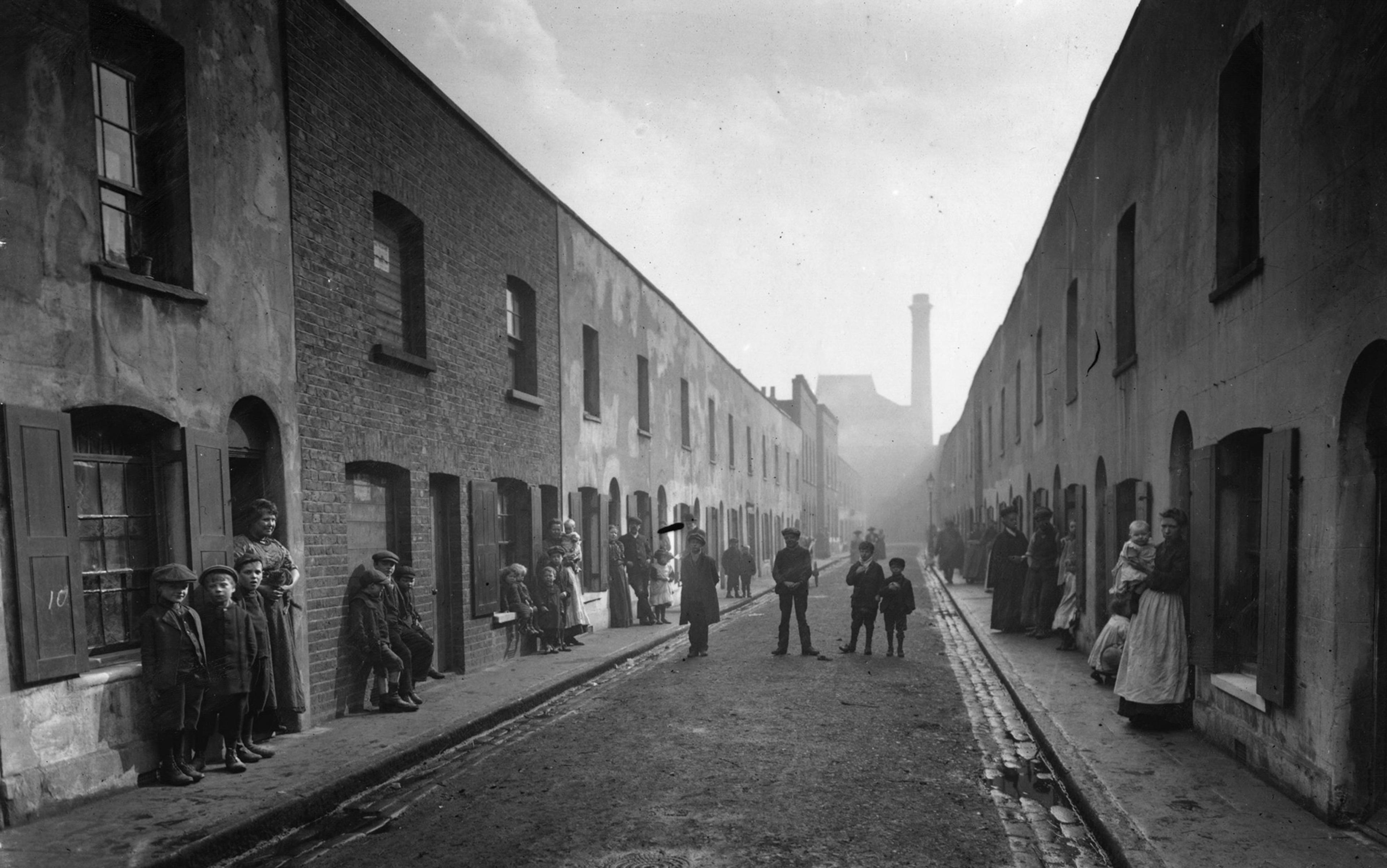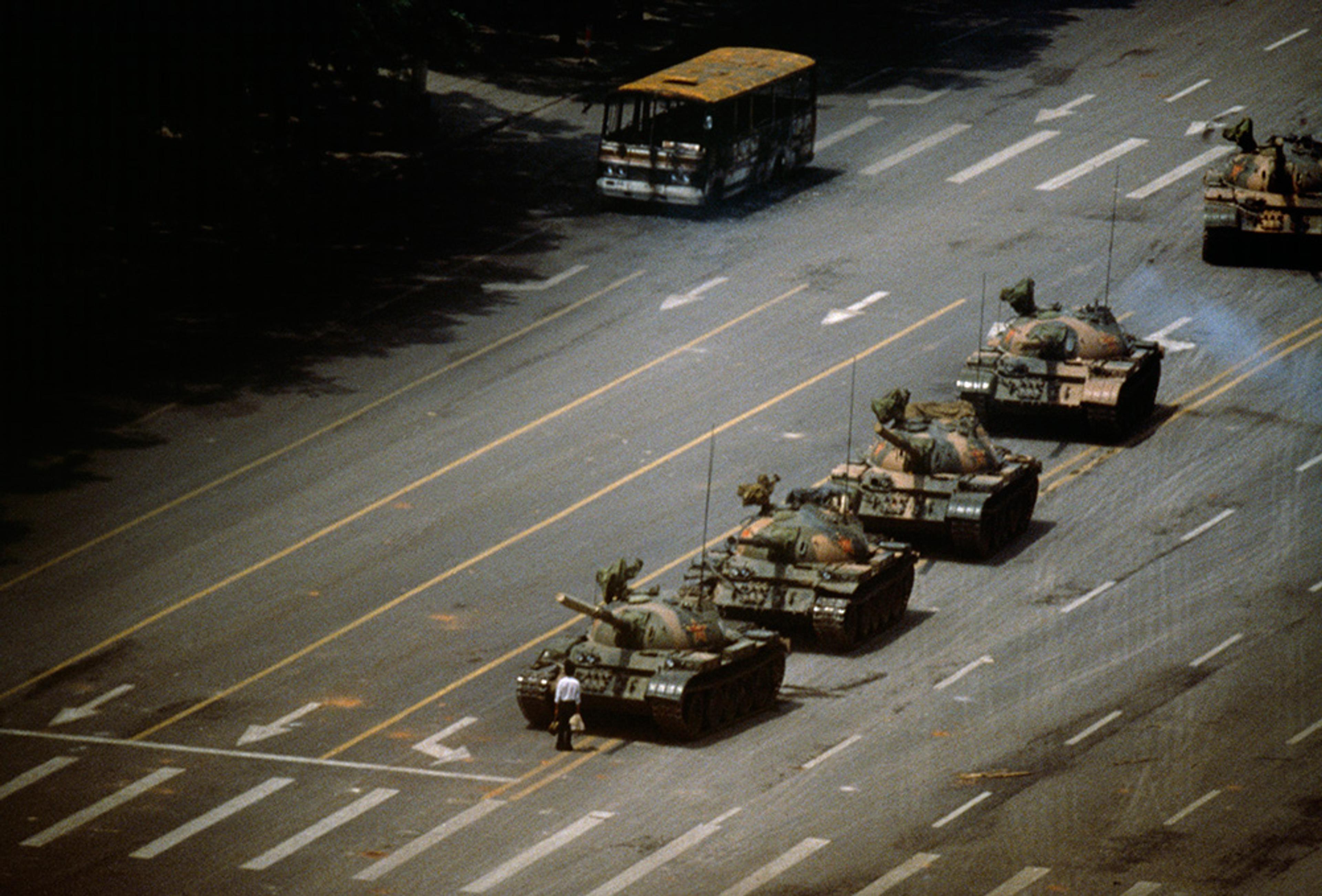A photograph taken in 1880 by Bedford Lemere, a renowned architectural photography firm of the late 19th and early 20th centuries, shows a dimly lit courtyard, narrow and surrounded on three sides by worn brick buildings. Uneven paving stones lead to a passageway, through which, barely visible, a man and a child watch the photographer from a distance, while a spectral presence in the foreground reveals itself to be another person, their form blurred, suggesting they moved during the long exposure time a camera of the era required. The photograph pictures Jerusalem Court in Clerkenwell, London. Most likely, it was commissioned by the Clerkenwell vestry to earmark Jerusalem Court as an area ‘unfit for human habitation’ – a phrase used by housing inspectors to describe dwellings deemed unhealthy for residents to live in. In the annual report for 1899, a special committee, commissioned by the Clerkenwell vestry to examine the condition of courts and blind alleys in the area, states that, according to ‘medical men’, the block of dwellings on the north side of Jerusalem court is ‘very unhealthy, without through ventilation, and such as should never have been built’.
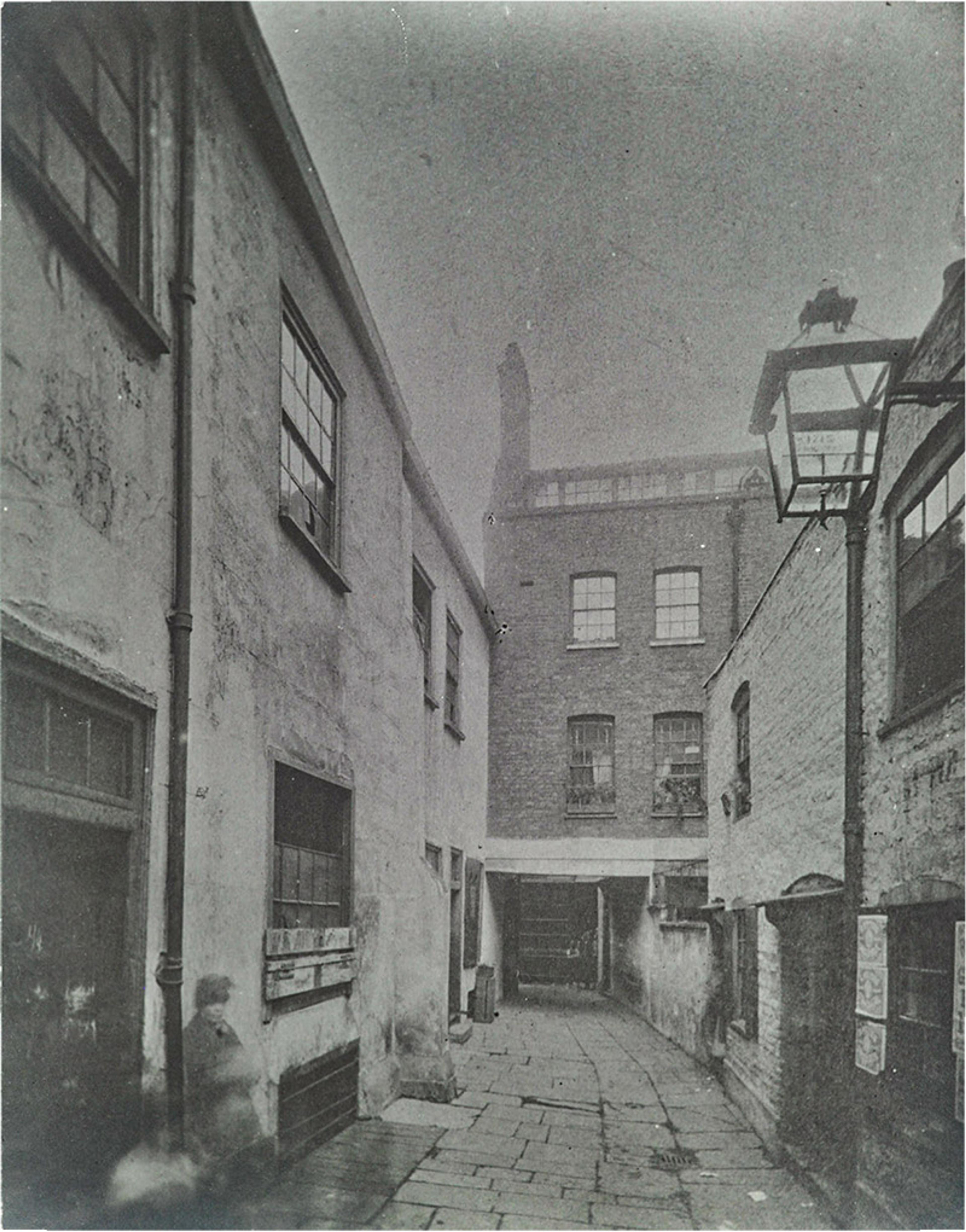
Jerusalem Court, Clerkenwell. Photo ©London Metropolitan Archives
The photograph of Jerusalem Court was, in fact, deliberately taken in such a way as to reinforce the fatal verdict of the ‘medical men’. The emphasis on the enclosed sense of space – enhanced by the camera angle – and the lack of light, dilapidated buildings and stained paving mobilise visual tropes of disease and filth that recur in slum photography to signal urban decay. When presented to the Clerkenwell Sanitary Committee, the photograph read as evidence that the courtyard was a slum area and, as such, an appropriate candidate for clearance and demolition.
Slums have long invited the camera’s gaze. This photograph of Jerusalem Court is characteristic of the many photographs of slum housing taken across Britain since the late 1860s. Most of these are unremarkable in aesthetic terms, but the sheer volume of ‘slum photographs’ held in the archives of British cities such as London, Manchester, Liverpool and Birmingham reveals the extent to which slum housing – and, by extension, the management of the working-class populations who lived in it – was a subject of major national concern. From Thomas Annan’s 19th-century photographs of rundown Glasgow tenements, to images of East End slum clearances taken in the 1950s, such images have informed our ideas about how the urban environment might be critically linked to the nation’s social, moral and physical health.
Slums captured the American imagination, too. In the 1880s, Jacob Riis, once a destitute Danish immigrant himself, photographed the abject conditions endured by New Yorkers in the overcrowded tenements of Lower East Side Manhattan. Riis’s photographs revealed for the first time to a suitably scandalised middle-class public how the ‘underclass’ lived, inaugurating a tradition of photographing the most powerless in society, which was built on by 20th-century photographers like Dorothea Lange. While Lange was photographing the rural poor of America’s dust bowl in the 1930s, British photographers like Bill Brandt, Edith Tudor-Hart and Humphrey Spender were documenting British slum life. Brandt made his name showcasing the polarities of class differences in British society. His first book, The English at Home (1936), juxtaposed poverty-stricken working-class neighbourhoods with images of the extravagant homes and lifestyles enjoyed by the British upper classes. Spender began his career photographing daily life in working-class communities for the Mass Observation movement while Tudor-Hart, a radical socialist and Jewish intellectual, photographed deprived areas across London and Wales, focusing on the working lives of women.
Between 1930 and 1950 – when two world wars and extensive bombing compounded the nation’s housing shortage – photographs of slum conditions in British cities taken by Brandt, Tudor-Hart, Spender and others began to feature regularly in the pages of popular photo magazines such as Picture Post, Weekly Illustrated and Lilliput. But did these widely consumed photographs of slum life – teeming in the official records and attracting the eye of documentary photographers – lead to any improvement in the lives of ‘slum dwellers’, forcing local authorities to implement social reform? Or did the visual tropes they promulgated merely reinscribe existing social and political structures that framed working-class people as a powerless group, at best, dependent on the philanthropy of middle-class elites and, at worst, as a filthy ‘underclass’ contaminating Britain’s urban centres?
In late 19th-century Britain, inadequate, overcrowded housing stock was becoming an urgent issue for local authorities. Cities were growing at an exponential rate, as agricultural workers flocked to urban areas to look for work: between 1851 and 1881, London’s population rose from 2.3 million to over 3.8 million. Overcrowding was endemic in central areas near the commercial markets that offered employment, and was fuelled by unregulated housing laws that favoured landlords and failed to compensate renters if they were evicted. By the century’s end, tens of thousands of Britain’s labouring classes lived in one- or two-room dwellings without proper sanitary facilities, leaving them exposed to diphtheria, tuberculosis, cholera and typhoid, diseases which at the time had no certain cure.
Over the second half of the 19th century and the first decades of the 20th century, a succession of acts were passed that gave local authorities increasing powers to purchase areas of old housing and pull down dwellings deemed unhealthy. As medical officers of health descended on the slums to document the worst offences to human wellbeing, the camera emerged as an important surveillance tool. A modern technology that promised to render reality far more faithfully than any illustration, the camera enabled inspectors to make extensive visual records of the housing stock under their purview. Their ‘realist’ photographs gave concrete shape to what housing ‘unfit for human habitation’ looked like and then helped to justify their destruction, displacing thousands of tenants.
The camera, used as an instrument of surveillance, coded slum inhabitants as a pliant, homogeneous mass
The meaning of these photographs was tightly controlled by municipal officials. Consider this photograph of a Southwark slum, taken in 1923, commissioned by the housing section of London County Council’s Architects’ Department. It pictures a dark courtyard enclosed by grey-looking tenement buildings. Strung up between the houses is a washing line, hung with bright white sheets. To the left of the frame, a gaggle of small children watch the camera curiously. Although the paving stones are stained and uneven, there’s little to suggest that the houses in the street are actually insanitary. In fact, the clean washing suggests that care and attention has been paid to the cleanliness of the street by its residents. Yet the caption on the back of the photograph classifies the street as an ‘insanitary area’, guiding the viewer to see the narrow courtyard, dingy light and dirty pavement as evidence of urban decay. The caption, likely written by a sanitary inspector or medical officer of health, forecloses an interpretation of the photograph as anything other than evidence of substandard housing conditions.
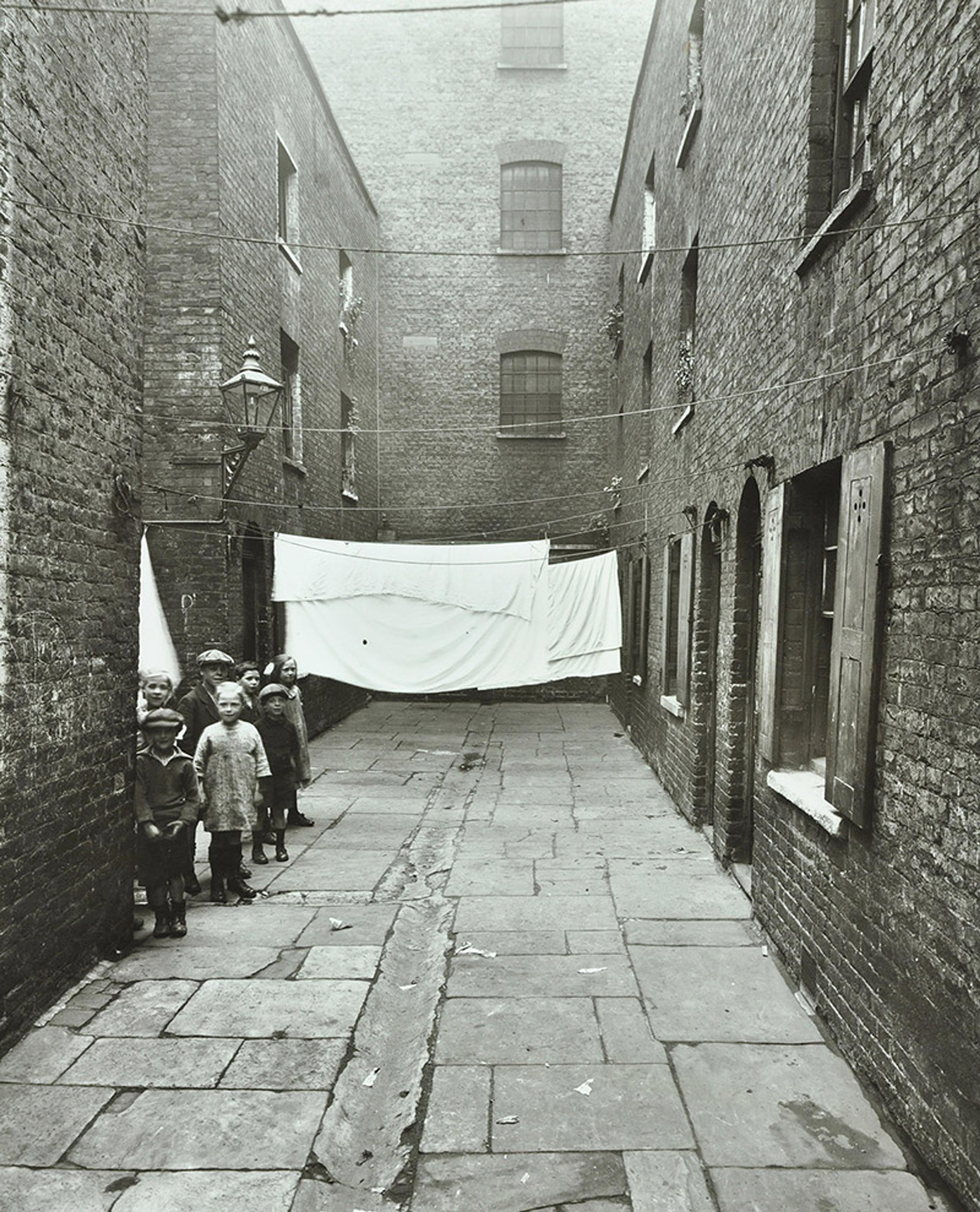
Southwark slum. Photo ©London Metropolitan Archives
In most local authority photographs of slums, humans appear as incidental figures, haunting the edges of the frame as if surplus to requirement. Huddled to one side of the image, the children in the photograph of the Southwark slum are framed as bystanders: the slum, and the filth and disease inscribed within it, take centre-stage. In an influential essay on 19th-century slum photographs of Quarry Hill in Leeds, John Tagg argues that the camera, used as an instrument of surveillance, coded slum inhabitants as a pliant, homogeneous mass. He argues that slum photography invited viewers to imagine an alternative environment: ‘a desirable space in which people will be changed … into disease-free, orderly, docile and disciplined subjects’. As I sift through images in the London Metropolitan Archives, I’m struck by the all-encompassing nature of the caption ‘insanitary area’, which seems to stigmatise the families who lived in such housing as filthy too – just another feature of the unhealthy urban landscape that, along with damp walls, broken windows and stained paving stones, needs to be ‘corrected’ in order to restore the city to health.
This stigmatising of the working-class subject reflects the prevailing attitude of the middle and upper classes in Victorian Britain, among whom it was widely held that the ‘slum dweller’ made the slum. In 1898, Charles Booth’s poverty map of London categorised slum residents as the ‘lowest class. Vicious, semi-criminal’, fuelling national anxieties that moral and social degeneration were linked to urban decay. The relative invisibility of slum housing, which was hidden in alleyways that had originally been used as stables, or behind the townhouses of the wealthy, allowed the slum to become a potent social imaginary onto which the middle classes could project their fears of disease, racial mixing, moral degeneracy and sexual deviance. By denying ‘slum dwellers’ any form of subjecthood in visual representations of their neighbourhood, local authority photographers reinforced power relations that placed working-class people at the bottom of Britain’s social hierarchy.
Where medical officers of health and sanitary inspectors targeted the lens primarily on the houses being torn down, documentary photographers focused instead on the often-abject conditions slum dwellers endured. In both Britain and America, their gaze takes us beyond the street and into the domestic lives of the urban poor, bringing the blurry spectre of the slum dweller into focus for the first time. In How the Other Half Lives (1890), Riis showed immigrant families crowded into squalid rooms, their personal effects and total poverty starkly displayed. Having mastered the recently invented flash function, Riis was able to take photographs inside dimly lit buildings that had previously been beyond the camera’s reach. Yet Riis’s interest in photographing the working poor didn’t extend to feeling sympathy for their plight. His gaze was largely voyeuristic, and he exploited the subjecthood of working-class people to underline his own social mobility. Recalling his time on Mulberry Street, a notorious thoroughfare in New York, Riis wrote in distinctly othering and racialised terms: ‘I went poking about among the foul alleys and fouler tenements of the Bend when they [immigrants] slept in their filth … sounding the misery and the depravity of it to their depth.’ As some of the first social documentary photographs of slums, Riis’s images prefigure how representations of working-class people by documentary photographers would ignite ongoing debates about voyeurism, exploitation and the nature of reality in the documentary tradition.
In Britain, it wasn’t until the 1930s that documentary photography of slum life became widespread. The Great Depression had left the nation grappling with dismally high unemployment rates, a housing shortage and a fiscal crisis, forcing politicians to recognise that only a robust welfare state could ensure good quality housing for all citizens. As a direct result, the Housing Act (1930) empowered councils to make compulsory purchases of land and legally enforce mass clearance schemes. At the same time, it was becoming clear that documentary photography was a far more persuasive medium than text in campaigns for social reform. In response to the British public’s newly awakened interest in the everyday lives of ordinary people, picture editors of magazines and newspapers began to regularly commission photographs from documentarists revealing substandard living conditions across the country.
Public discourse around housing at this time was shot through with allusions to the new science of eugenics, with debates about environmental reform pivoting on whether unhealthy living conditions resulted from the unfitness of the slum dweller or the degraded environment of the slum itself. Proponents of eugenicist thought (found across the political spectrum) advocated for controlling reproduction among the ‘mentally defective’ or ‘degenerate’ populations living in deprived urban areas, effectively winnowing the population to produce a healthier human race and eliminate poverty. Documentarists, by contrast, sought to place the blame for the social problems of deprived urban areas on the appalling housing conditions endured by the inhabitants of such neighbourhoods, rather than their supposedly hereditary predilection for deviant behaviour. Photographers like Tudor-Hart, Spender and Brandt enjoyed the enormous reach of publishing in popular photo magazines, building on the assumed veracity of documentary photography to reveal the ‘realities’ of everyday life in slum streets. They approached areas such as the East End of London as the new terra incognita that would compel and fascinate middle-class audiences by letting them observe the lives of an exotic underclass whose social prospects might be brightened with their help.
The text frames London as another country altogether
In 1934, Weekly Illustrated published a photo essay entitled ‘Pull Down the Slums!’ A double-page spread, it deployed several visual strategies to establish a dialectic between the old, slum-ridden ‘Britain’ and the regenerated Britain of the future. ‘Slum Britain’ is represented through photographs of the jumbled rooftops cluttering the backyards of tenement houses and a close-up of the grating over a half-obscured basement, with a ‘front window’ opening for its residents (both likely taken by Brandt). There are children playing in a narrow street, and a family pictured ‘in a slum home in Wapping’, as the caption has it. These images sit in counterpoint to depictions of a new, modern block of flats in St Pancras and the green vistas of a garden suburb. Unlike the immigrants in Riis’s work, the slum dwellers here are presented as stoic victims of circumstance, an urban ‘residuum’ who must be helped to take advantage of the opportunities offered by improved housing. This framing was characteristic of photographs of working-class people in the 1930s. The photograph of the family in the slum interior – posed to resemble the very picture of domesticity, parents huddled over children and work, in a cluttered but clean home environment – is a vision of pathological social need. As the caption affirms: ‘they continue on the struggle to bring their children up in health and happiness!’
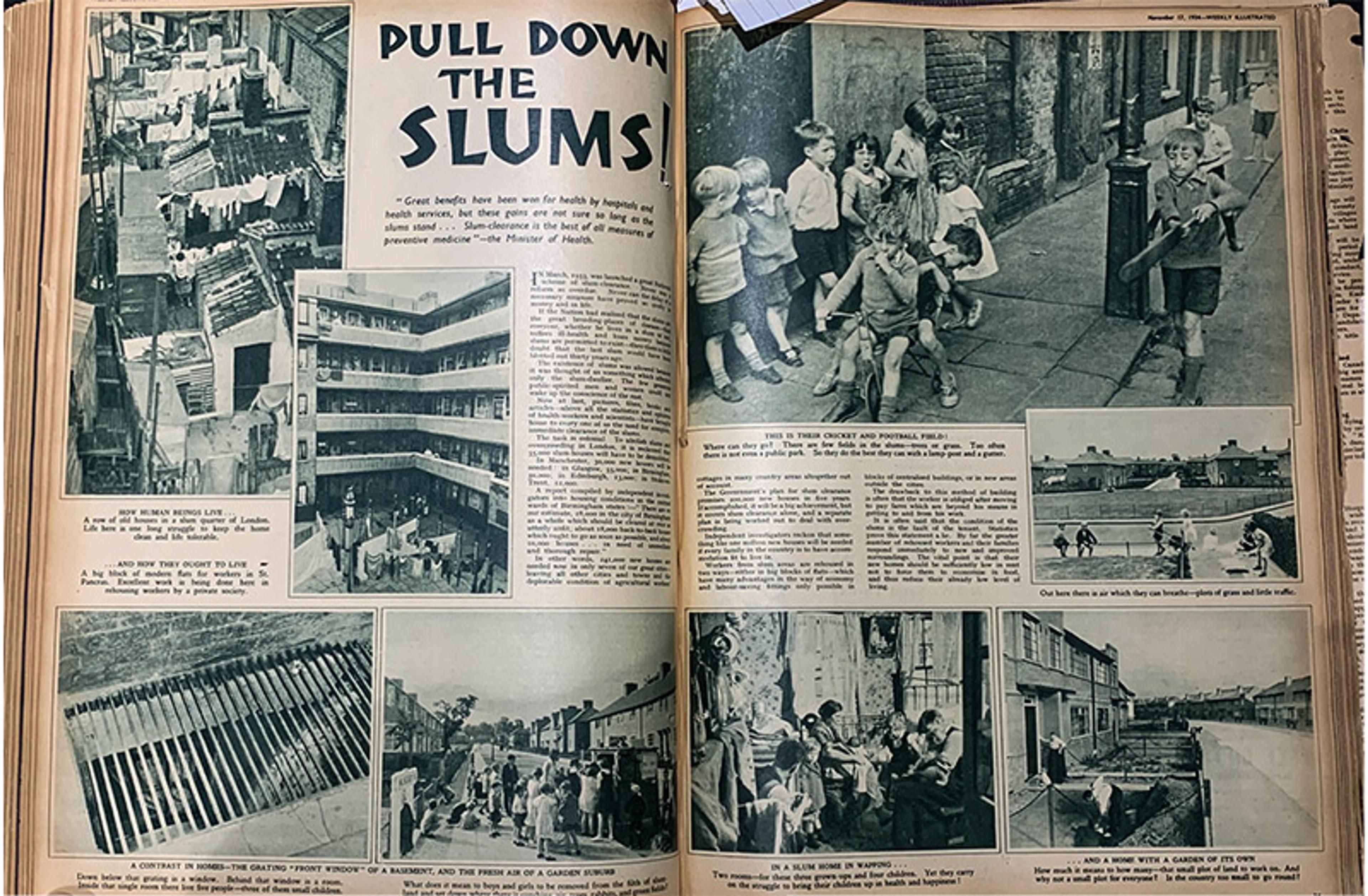
‘Pull Down the Slums!’ Article in the 17 November 1934 edition of Illustrated Weekly. Photo supplied by the author
In some ways, this photo essay represents a continuation of 19th-century philanthropic discourses, in which charity is visited upon the urban poor by the middle classes, whose duty it was to provide relief. The largest photograph in the spread, of children playing in the street, biking and batting balls, offers a deliberate visual connection with Victorian slum photographs that portrayed children as the most vulnerable victims of disease and urban degradation. The accompanying article avows that ‘by far the greater number of rehoused workers and their families respond immediately to new and improved surroundings’, reinforcing the idea that slum dwellers must be transformed into healthier, more economically productive citizens by expert professional elites.
The idea that slum dwellers needed to be helped towards respectability often went hand in hand with an understanding of slum areas in Britain as foreign. In 1938, Picture Post published an article under the title ‘Whitechapel’, featuring photographs that presented the area as a ghetto within the city of London. The strapline ‘“Picture Post” turned a cameraman loose in Whitechapel’ evokes visions of an intrepid explorer mapping out a new danger zone in the urban jungle of the ‘inner city’. Indeed, the text frames Whitechapel as another country altogether: ‘You are in High Street, Whitechapel, but you may as well be in High Street, Poland.’ The accompanying photo essay intersperses what by now were typical images of the slums – photographs of children playing in ‘slum streets’; families seated around the dinner table; groups of women talking in the street – with photographs of Whitechapel’s Jewish residents. One of the largest photographs, captioned ‘The Yiddisher Parliament Meets’, pictures a group of Jewish men talking in a square (it may as well be Poland!). In other pictures, a Jewish tailor displays his wares and a bagel seller conducts his business.

Original caption: ‘The Yiddisher Parliament Meets.’ All images Picture Post, 1938/Getty Images

‘What do they talk about?’

‘Buying Bygles’
The captions and article seem unsure of how to present this vision of racial mixing. One states: ‘to the average East Ender racial questions mean very little’, and yet the description of the Jewish men as a ‘Parliament’ belies deeply rooted antisemitic anxieties about Jewish domination. This is apparent again in the author’s unease about the Yiddish spoken on British streets: ‘What is this language jabbered so frantically on the pavements?’ To the editors of Picture Post, Whitechapel’s Jewish residents are an exotic and unknown quantity that requires glossing for the audience (‘Bygles are ring-shaped rolls of bread’). It is hard not to pick up echoes here of the way that non-white populations are characterised as an unknowable ‘other’ in colonial photography of the period. Even a photograph of a ‘slum street’ that would have been a familiar sight to readers of the 1930s is reconfigured in this Picture Post spread as a foreign and strange scene. ‘This is Their Outlook: Human beings live here, grow up here and die here – in the same world as you and me’ runs the image’s caption. Picture Post might have been committed to social democracy, but at the same time its visual coverage of slum life reified class difference, betraying anxieties about racial mixing and the impact of immigration on the visual landscape of the city.
While media coverage of slum life had begun to construct an image of the slum dweller as the helpless, if unknowable, victim of circumstance, photographic records of slum areas made by municipal councils continued to conflate slum dwellers with the disease and squalor engendered by their own living quarters. Much like the local authorities of the 19th century, throughout the 1930s, housing and public health officials visited slum areas to photograph buildings due for demolition.
A photograph album made by Hackney’s medical officer of health between 1930-35 for a Ministry of Health inquiry into slum clearances reveals how 19th-century attitudes about the moral laxity of slum dwellers found new expression in the slum photography of the interwar years. One page, entitled ‘Dirty and Filthy Premises’ features two black-and-white photographs of a slum interior at 1A Big Hill, Hackney. The first shows an empty scullery from which: ‘seventeen vanloads of filthy furniture and effects were removed by council for disinfection & destruction 1934.’ The second is of a cluttered living space, the only available light picking out piles of dishes and kitchenware that are nevertheless neatly stacked on the table. Barely discernible in the background, the owner of the premises can be seen standing by the door, blending into the general darkness of the interior as if the camera’s gaze has passed right over her body. There is no record of the resident’s name, or how she felt about her belongings removed and destroyed. Under the surveillant gaze of the camera of the medical officer of health, the slum dweller is dehumanised – implicated with the decay and squalor of her environment.

‘Dirty and Filthy Premises’ at 1A Big Hill. Images courtesy London Borough of Hackney Archives

Scullery

Living and sleeping room
The minutes of a town hall meeting held by the Metropolitan Borough of Hackney in 1932 offer a poignant record of the opinions and concerns of tenants who would be displaced by slum clearance orders. Their objections reveal that the prospect of being rehoused in blocks of flats, without gardens or the opportunity to keep pets, was dismaying for many tenants. A tenant named Mr Relton was among the reluctantly dispersed; he tells the lawyer for Hackney Council: ‘You have sunk me, that is all.’ Mr Kidd, another tenant, describes the newly built flats as ‘barracks’ and ‘nothing more than slums’. ‘Why not houses? Why not let us remain as we are?’, he pleads. Mr Kidd’s words speak to the isolation that many slum dwellers felt at being moved into blocks of flats – ostensibly an opportunity to join the respectable middle classes, but at the cost of being able to talk to neighbours and build close-knit communities. Strikingly, many tenants thought of living in tenement housing as a marker of English identity, and distanced their own condemned homes from slums in racialised terms: ‘Having travelled the world a bit I know what slums are. You have not got them in England. We are Englishmen and want to live as Englishmen.’ While ‘slum dwellers’ were exoticised by the media as a mysterious foreign ‘other’ who lived right under the noses of the middle classes, working-class tenants saw the neighbourhoods they lived in as quintessentially English, a vision grounded in the ability to have a garden, speak to one’s neighbours and live in a house instead of a multistorey block.
Slums remained a potent symbol of urban decay in the British cultural consciousness
Following the Second World War, media coverage of poverty-stricken slum conditions gave way to exuberant images of politicians posing at slum clearance sites. By 1956, 35,000 houses in Britain were condemned or demolished in a major government drive to clear slum areas, and more than 200,000 people had been rehoused. Press photographs taken of MP Duncan Sandys, the Conservative Minister for Housing, show him striding through the rubble of an East End slum-clearance area with a group of aides. Sandys had vowed to knock down Britain’s remaining ‘back-to-back’ streets and build modern flats in their place; in 1956, he embarked on a tour of cities with the worst slum areas, beginning in London. The photographs, taken by a photographer from the Keystone Press Agency, play on the contrasts between the polished group of officials, with their wool coats and shiny shoes, and the rubble-strewn ground around them. Small visual details, such as a child’s doll, abandoned in the debris of a demolished slum home, or the scrap of floral wallpaper on the wall Sandys is poised to knock down – pickaxe held for the high swing, his face scrunched in concentration – are the only reminders of the generations of people who made their lives in the area.
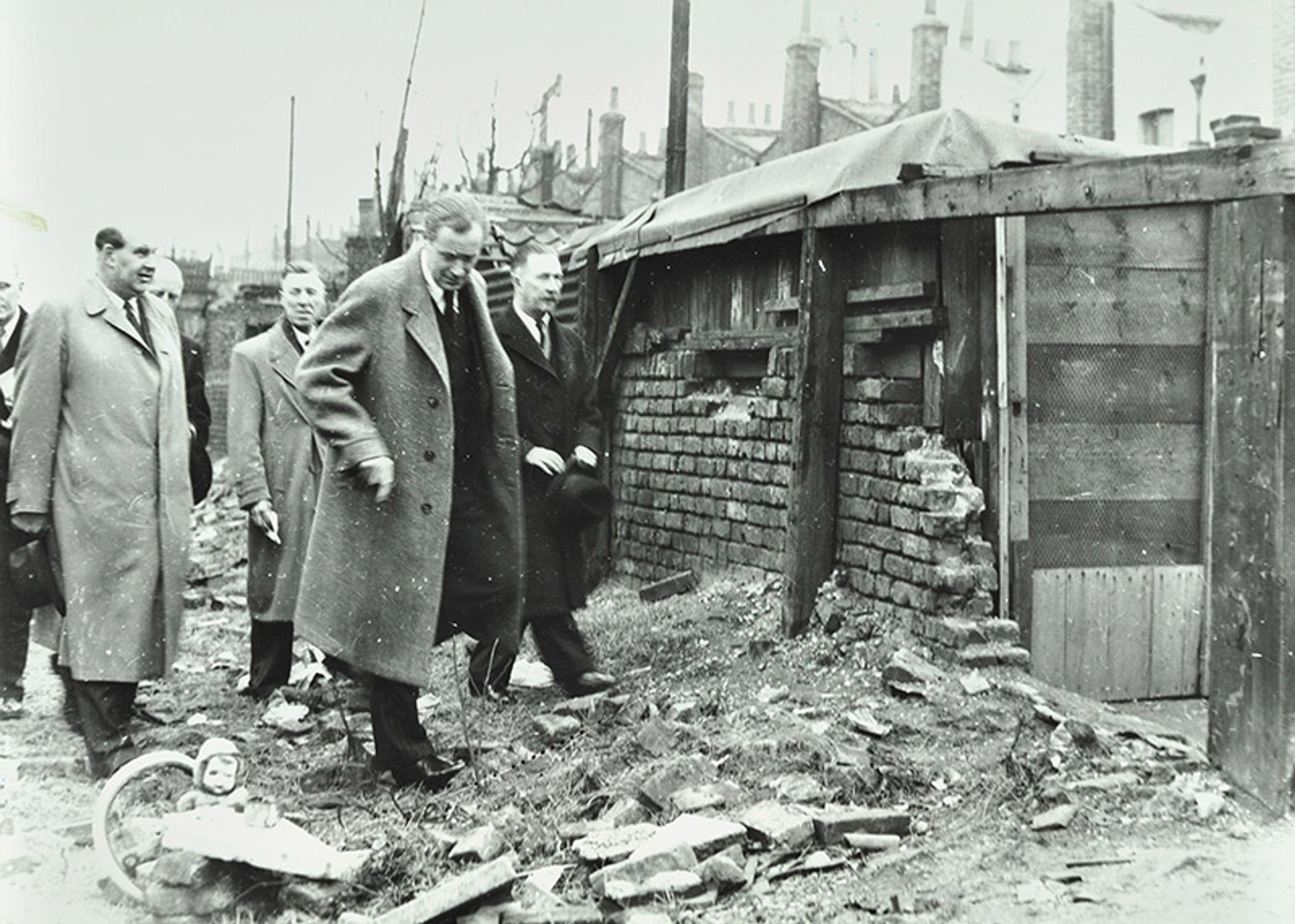
Conservative MP Duncan Sandys during slum clearances in 1956. ©London Metropolitan Archives
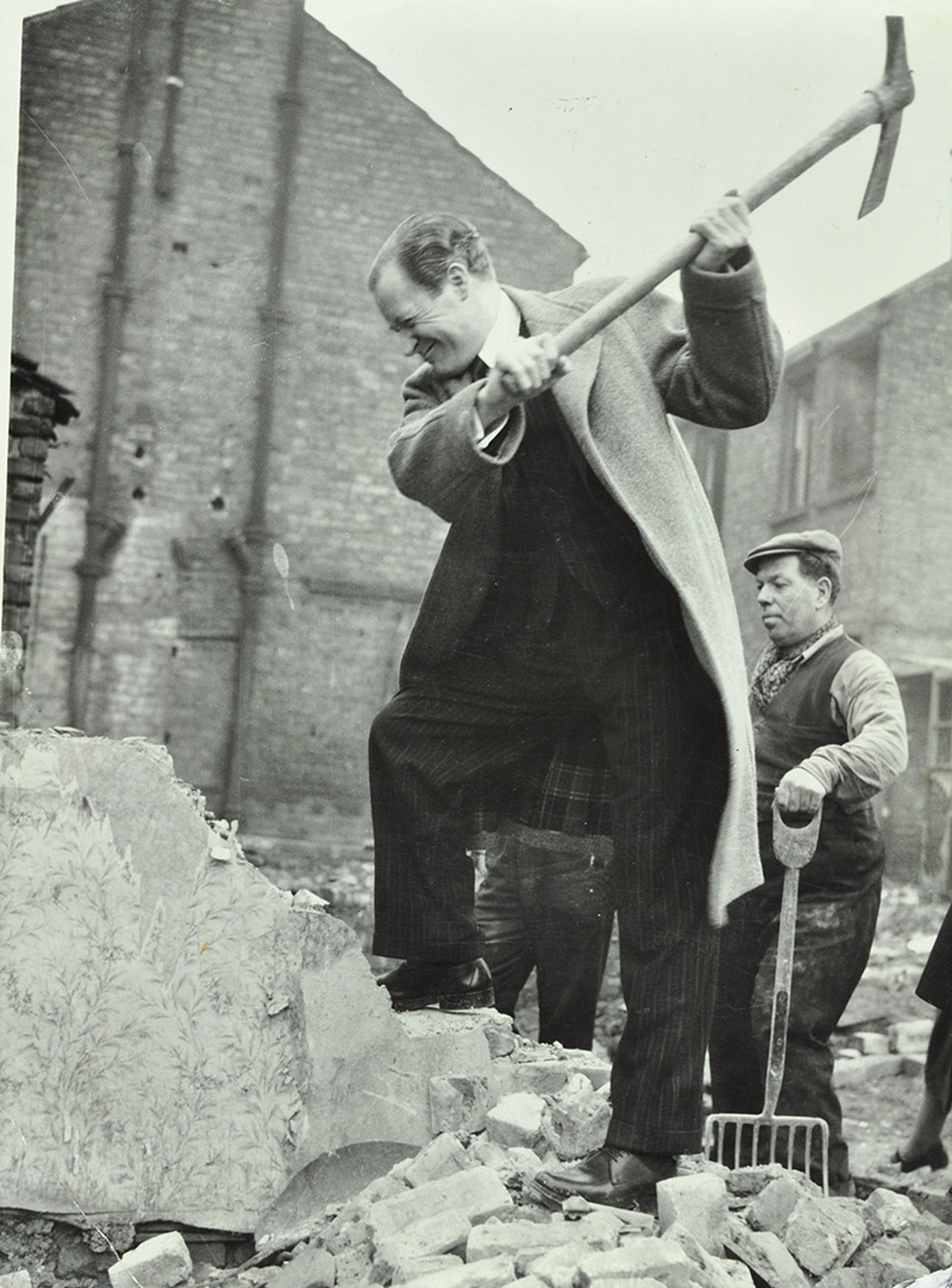
Sandys would have known that slums remained a potent symbol of urban decay in the British cultural consciousness. Posing among them was a photo opportunity, in the modern sense, in that images of him literally pulling down the slums helped align the Conservative government with rallying cries for a regenerated postwar Britain – a vision that played well with their middle- and upper-class voters. Read with the privilege of hindsight, however, these images of the political elite smashing through former working-class neighbourhoods seem more prescient of the accusations of social cleansing that were levelled at local councils from the 1960s onwards. What’s more, many of the tenants removed from slums were unable to afford the rents of the new flat blocks, and were forced to leave to seek lower rent in older council houses in the suburbs or, ironically, cheaper substandard housing in the private sector. It was the ‘respectable’ working classes, then, rather than the poorest tenants, who took up residence in the new accommodation.
As any photographic theorist would remind us, the meanings inscribed in photographs are never fixed. Photographs are palimpsests, their significance written over by successive generations who interpret them within their own historical context. How then, is a modern viewer – who supposes themselves to be visually literate – meant to approach slum photography? It is tempting to look at these photographs and imagine that we are being granted privileged access to a window into the past. Yet just as medical officers of health and documentary photographers projected their own agendas and prejudices onto the images they produced, so too does the modern viewer. There is a danger of 19th-century photographs of working-class neighbourhoods becoming quaint, Dickensian-style emblems of a bygone era, signified by the figure of the stoic cockney, urchin or street hawker – a vision no more true than the Victorian philanthropist’s imaginary of the slum as a den of vice. Likewise, Brandt’s photographs of stark poverty have, over the years, lost their affective force as images capable of mobilising public concern. As the decades have passed, his photographs of the actual hardships of the working poor – already highly staged and artificial representations of ‘reality’ – have become further romanticised as icons of 20th-century documentary practice.
It is impossible, then, to really ‘see’ a historical photograph without interpreting it anachronistically. Modern viewers might look at a Brandt photograph and still be moved, not by the poor housing conditions of interwar Britain so much as by their similarity to images of temporary refuges and hostels in the UK, or photographs of slum landscapes across the global South which regularly feature in the news. At the same time, the modern rage for ancestral history has seen archive photographs acquire new meaning as family photographs. Images of ‘slum dwellers’ become intimate traces of a relative for the researcher who comes to the archive not as a social observer, but as a descendant in search of a lost family history.
What remains constant across these interpretations, however, is the power relations of the photographic encounter. Intended for the gaze of groups who hold power, slum photographs ensure the continual disempowerment of the urban poor. As Susan Sontag writes in On Photography (1977), to take a picture is to – however momentarily – betray an interest in maintaining things as they are: ‘to be in complicity with whatever makes a subject interesting, worth photographing – including, when that is the interest, another person’s pain or misfortune’. As documents that operate to record rather than intervene in adversity, slum photographs expose the limits of our compassion as much as they demand it.
